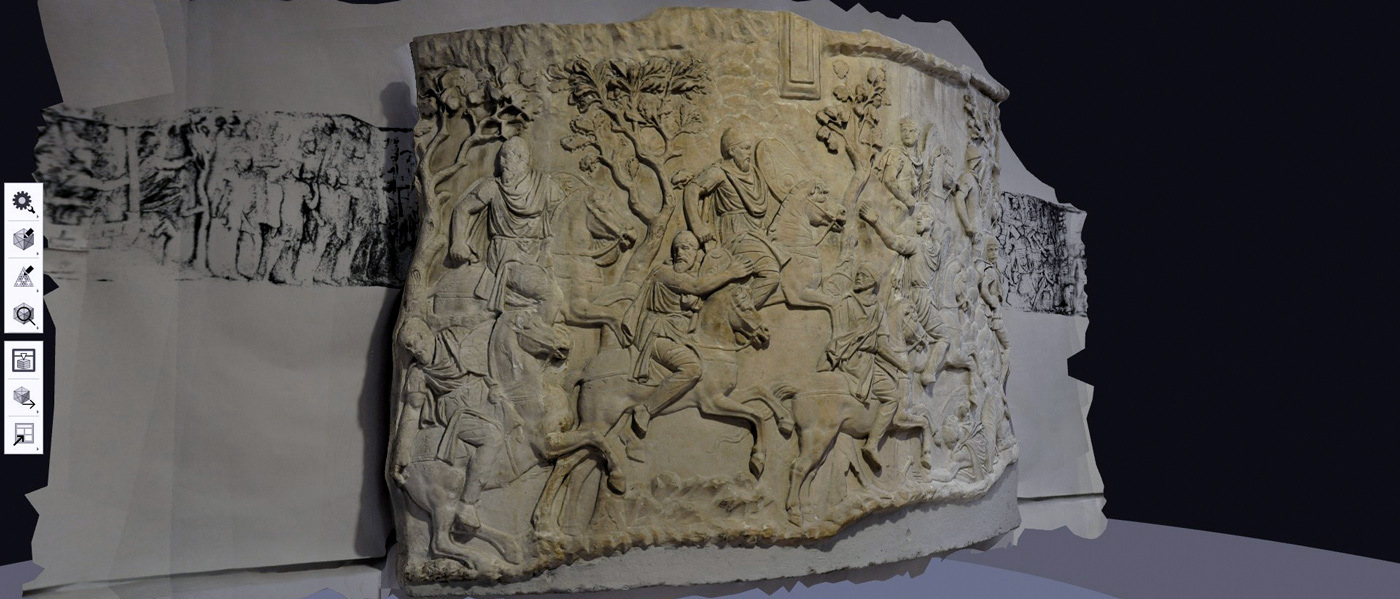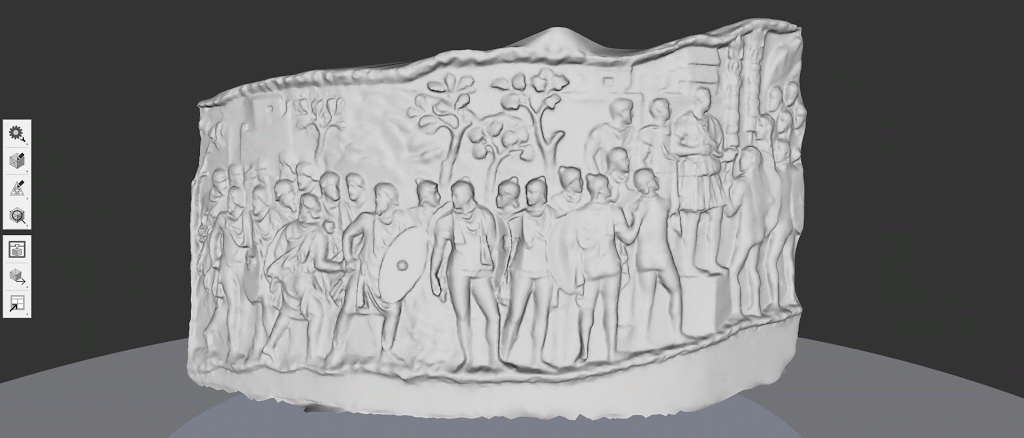
Trajan's Column
Copie a columnei (Replica of Column)
În perioada cât a fost director al Școlii Române din Roma istoricul Emil Panaitescu a adresat numeroase memorii Academiei Române, Ministerului Instrucțiuni Publice, Ministerului de Finanțe și Parlamentului pentru a realiza o copie a Columnei care să fie expusă în România. Eforturile sale au fost încununate de succes în 1939 când statul român a comandat copia, aceasta fiind terminată în 1943. Copia a fost executată din ciment alb armat, amestecat cu praf de marmură, și respectă proporțiile monumentului. Din cauza războiului mulajele au fost depozitate în diverse locuri locuri în Roma (Muzeul Lateran, Forul lui Traian, Palatul Expozițiilor) și doar în 1967 au fost aduse în România. Din 1972 copia la scară naturală a bazei Columnei lui Traian și copii ale scenelor reprezentate pe acest monument sunt expuse într-o sală a Muzeului Național de Istorie a României.
.EN - While he was director of the Romanian School in Rome, the historian Emil Panaitescu addressed numerous memoirs to the Romanian Academy, the Ministry of Public Instruction, the Ministry of Finance and the Parliament to make a copy of the Column to be exhibited in Romania. His efforts were successful in 1939 when the Romanian state ordered the copy, which was finished in 1943. The copy was made of reinforced white cement, mixed with marble dust, and respects the proportions of the monument. Because of the war, the molds were deposited in various places in Rome (the Lateran Museum, the Trajan's Forum, the Palace of Exhibitions) and only in 1967 were brought to Romania. Since 1972, the natural copy of the Trajan's Column and copies of the scenes represented on this monument are exhibited in a hall of the National History Museum of Romania.

Original monument
It is located in Trajan's Forum, built near the Quirinal Hill, north of the Roman Forum. Completed in AD 113, the freestanding column is most famous for its spiral bas relief, which artistically describes the epic wars between the Romans and Dacians (101–102 and 105–106). Its design has inspired numerous victory columns, both ancient and modern.The structure is about 30 metres (98 feet) in height, 35 metres (115 feet) including its large pedestal. The shaft is made from a series of 20 colossal Carrara marble[
Part of Trajan's Column in Bucharest (02) by mihai.s on Sketchfab
Part of Trajan's Column in Bucharest (03) by mihai.s on Sketchfab
CC BY-SA 4.0 - This is a Free Culture License!

{{ 'Comments (%count%)' | trans {count:count} }}
{{ 'Comments are closed.' | trans }}